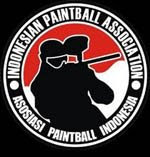Since the advent of semi-automatic markers in the early 1990s, both insurance and competitive rules have specified (at most fields) that markers used in paintball must be semi-auto only; specifically, that only one paintball may be fired per trigger pull. While this was a perfectly clear definition when markers were all based on mechanical/pneumatic designs, the introduction of electronically controlled markers in the late 1990s brought technology beyond the rule. Electronic markers are often controlled by a programmable microcontroller, on which any software might be installed, including software that may add more than one shot per trigger pull in various ways. This effect is generally referred to as "shot ramping" (as opposed to velocity ramping): an electronic firing mode where a consistent full-automatic rate-of-fire will be triggered as long as the player maintains a certain, lower trigger-pulls-per-second.
Pump action
Pump action markers must be manually re-cocked after every shot, much like a pump action shotgun. This manual action is much slower than other configurations, but is preferred by some over styles of markers as a challenge to themselves to learn how to play with less rate of fire. Others merely cite the increased satisfaction of playing with a pump. The slower pace of play also forces pump players to make every shot count, leading many to believe that the markers themselves are more accurate, which may or may not be true. However, when properly modified, high end pump markers have been known to achieve extremely consistent velocities when chronographed.
Stock class paintball exclusively utilizes a certain type of pump marker known as a stock class marker. This is a pump marker with a specialized stock class feed system- see stock paintball.
Semi-automatic
Semi-automatic markers use a variety of designs to automatically cycle a bolt and load a new paintball into the chamber with each trigger pull. This frees the player from manually pumping the marker, allowing them to increase their rate-of-fire. Semi-auto can both be used with a mechanical trigger or with electric trigger frames. The major benefits of an electric trigger frame is a lighter trigger pull as well as less space between the trigger and the pressure point (allowing the player to tap the trigger faster and shoot at higher rates of fire.) Semi automatic is the regulated mode of fire for NPPL.
Fully-automatic
Fully-automatic markers fire continually for as long as the trigger is held down. The Tippmann SMG 60 was the first fully-automatic paintball marker. Most electropneumatic paintball guns feature this mode, but the full-auto feature can be added to any electropneumatic marker by installing an aftermarket logic board, or buying a completely new electronic trigger frame.
Also, similar to the full-auto mode, some markers come equipped with burst modes. Ranging from three to six to nine shot burst, these modes can allow the player to take accurate shots with a quick pull of the trigger, loosing more than one ball to increase their chances of a hit. Also, when shooting quickly in burst mode, the rate of fire can become equal to that of the fully automatic mode, useful in close range situations.
Ramping
Ramping is a feature in some electronic guns that automatically shifts the mode of fire from semi-automatic to fully automatic as long as the trigger is pulled at a specified rate. Ramping can be difficult to detect, both because it may not be consistent or easily observable by a human. Ramping modes can also be hidden in the software, such that a marker will fire in legal semi-auto mode when being tested, but in an illegal ramping mode by the player.
To counter the problems with enforcing semi-auto rules, some leagues allow a specific ramping mode. The rule specifies a minimum time between shots of 66 milliseconds (approx. 15 shots per second), and that no more than one shot may be fired for the first three trigger pulls. The rate of fire is enforced using a device called a PACT Timer, a standard firearms timing device that measures the time between shots. The following are common league specific ramping modes. Many high-end markers have these modes preset in their firmware:
* PSP Ramping - Ramping kicks in after 3 shots; player must maintain 5 bps to remain ramping. Rate of fire cannot exceed 13.33 bps.
* NXL Ramping - Ramping kicks in after 3 shots; player needs only to hold down the trigger to maintain fully automatic fire. Rate of fire cannot exceed 13.33 bps.
* Millennium Ramping - Ramping kicks in after 6 bps; player must maintain 6 bps to maintain fully automatic fire. Rate of fire cannot exceed 12 bps. (This is true in some but not all markers.)
Sunday, November 9, 2008
Subscribe to:
Post Comments (Atom)











No comments:
Post a Comment